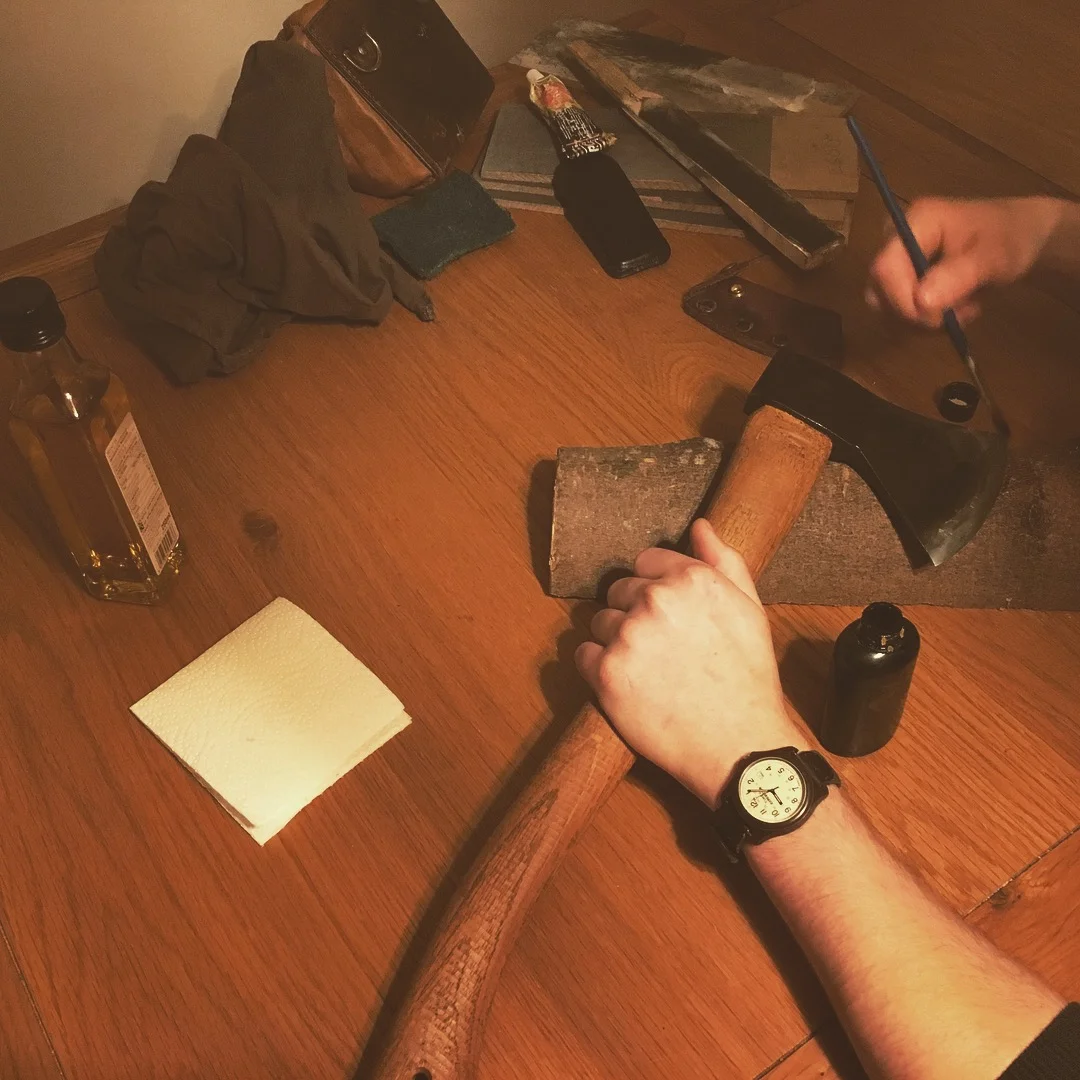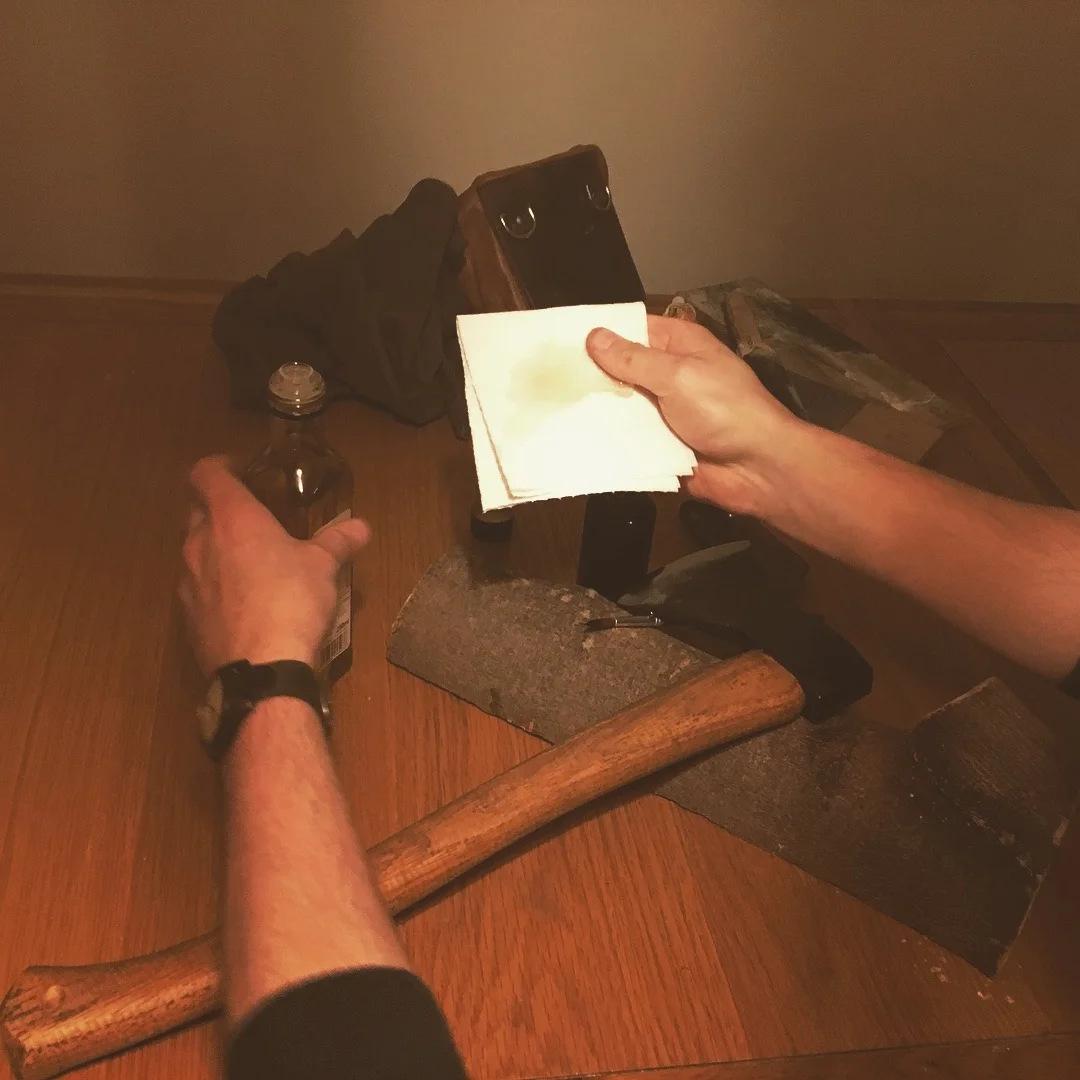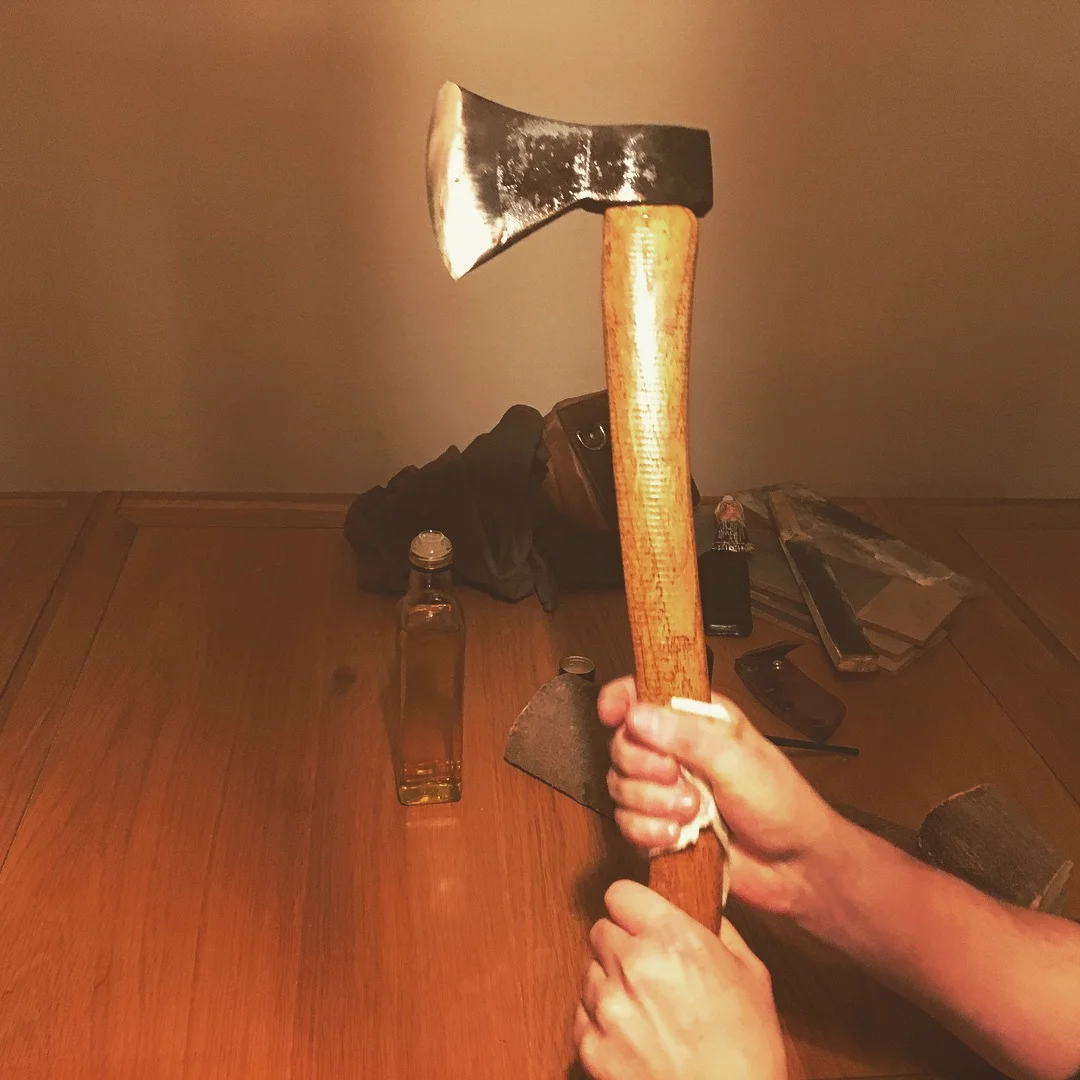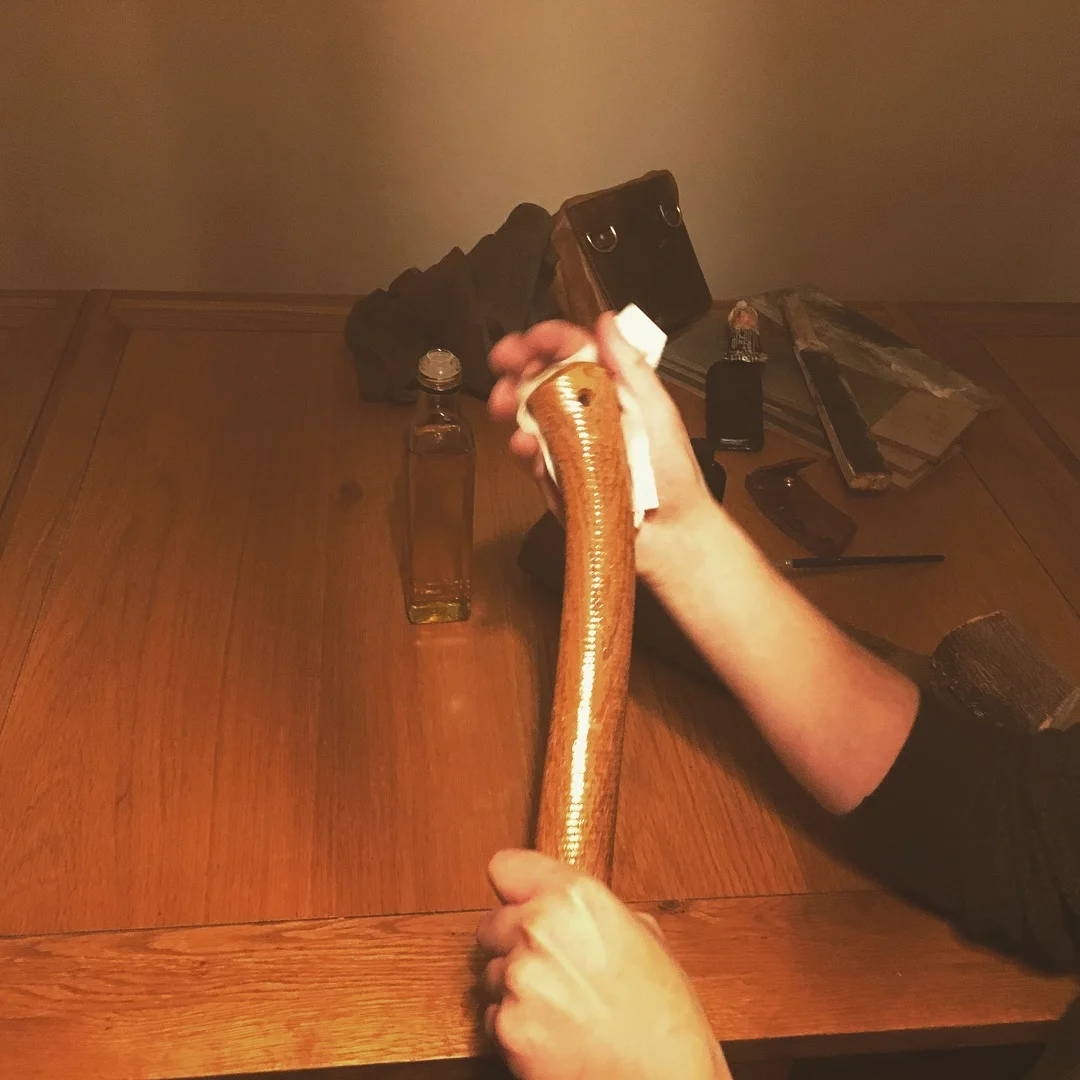Looking After Your Axe
Jamie Dakota
Following along from the last blog on looking after your boots, I wanted to highlight a couple of quick things I do to my axes to care for them after returning from time in the woods.
I'll do a future article on axe sharpening, but for now this one is a two step process to help maintain the luster of your axe which I usually do after a full sharpening session at home.
Firstly, let's treat the steel: I use a dry scouring pad to lightly remove any build up on the axe of tree sap, dirt, or oil etc from sharpening. Then I oil the axe head: Gun Oil by Napiers is about the best I've found for treating the head of the axe. Using gun oil has one distinct advantage over other types of treatments in that it dries and hardens like nail varnish, leaving a protective coating shell around the head. This is particularly handy in damp conditions like canoe journeying and practically all year in the UK as we are fond of our wet weather! If you don't have gun oil, you can use the oil described below just as on the handle (I do this with my belt knife) it's just not as durable a finish.
For the handle: Walnut Oil, why? Well two reasons, it's one of a handful of oils that polymerises when it dries. So for your axe handle this works as it won't stay sticky even when warmed in subsiquent use as with wax. The second reason I use walnut oil over any other is that I happen to have it in the workshop for oiling wooden spoons and other items I carve.
I use a piece of paper towel to oil the handle, and leave for 5 minutes for the oil to soak in. I then take a fresh piece of paper towel and rub the handle down to remove most of the surface oil, in theory leaving only the soaked in oil behind. It will still be lightly oily to touch.
CAUTION: Curing oils such as walnut and linseed when left on rags or towels have been known to spontaneously combust as the drying process is exothermic. I highly advise burning your oily towels safely after use, which is why I use the oil sparingly in the first place and on paper towels which are quickly burned.
With the excess oil wiped off, I then simple hang my axe in a safe place for a few hours or overnight to dry.
And that's all there is to it, I sometimes treat the axe sheath as I do my knife sheath (see here).
I'll follow at some point soon about axe sharpening at home and in the field and that'll about cover axe maintenance. I'd love to know what you think, if you do anything differently or take any extra steps please feel free to comment below.
All the best
Jamie
The axe featured in this article is the Bushcraft Axe by Robin Wood, and is available here:
The Woodland axe is a great all round axe for general work cutting, chopping, carving , splitting. Heavy enough to do the job but light enough to carry.
The head weighs 750g, total weight is 1050g and handle length is 18″.
This axe has a fine convex grind ideal for felling, cross cutting, splitting firewood and general use. They are ground by Brian Alcock, the last full time independent grinder in Sheffield with 50 years experience then honed to a razor edge.
Orders for this item are fulfilled by the team at WoodTools.
You must be 18 or older to order.

















